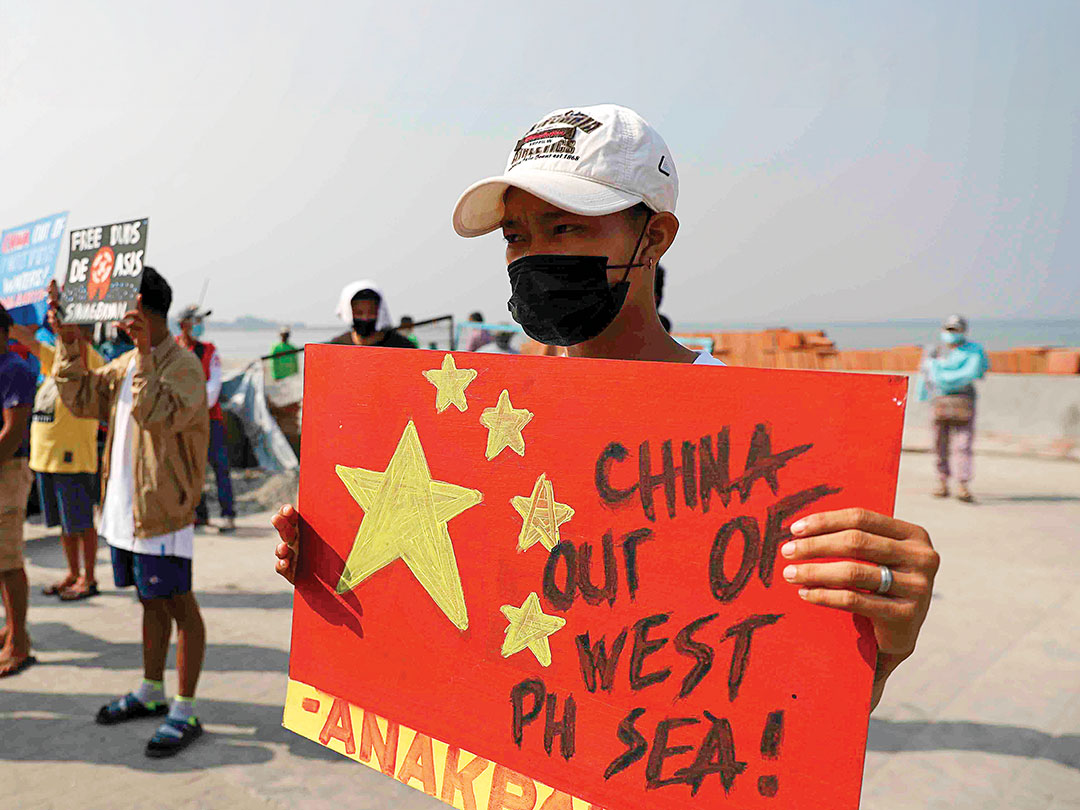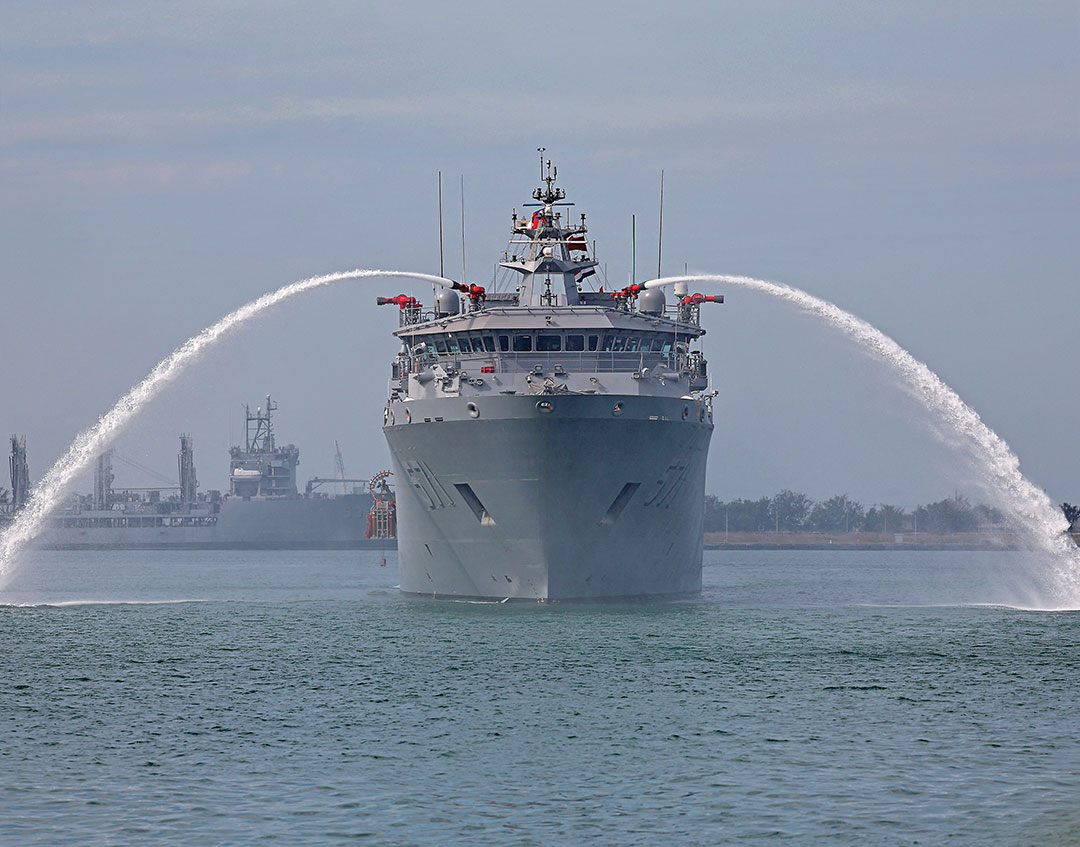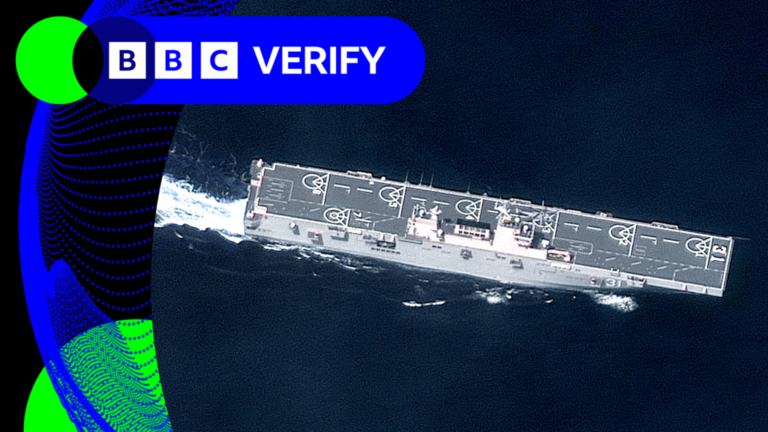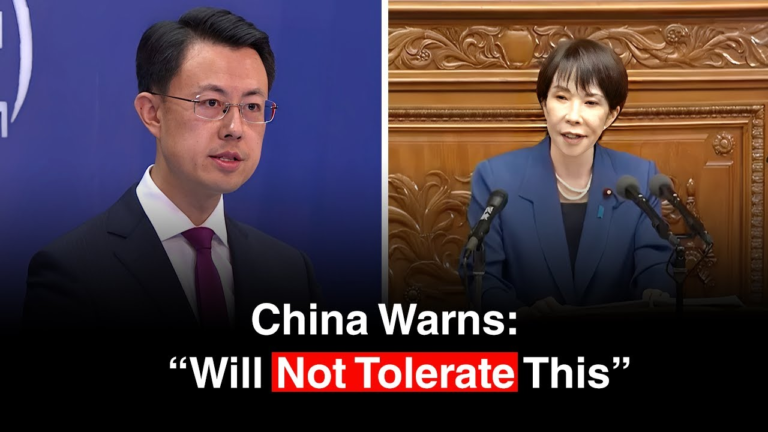
The Chinese Communist Party (CCP) consistently disregards other nations’ borders and sovereign rights. This is evident in Beijing’s actions, particularly in the South China Sea, where the CCP employs strategic legal warfare — or lawfare — to justify its excessive territorial claims and violations of other states’ sovereign rights.
Tolerating Beijing’s coercion emboldens further violations and erodes international norms. Instead, nations must preserve international law and their sovereign rights by embracing a multifaceted approach to exposing malfeasance and countering CCP lawfare. Failure to effectively address Beijing’s behavior will have severe consequences for security and stability in the Indo-Pacific.
Lawfare Defined
Lawfare is commonly understood as the use — or misuse — of law to achieve a policy objective. Academics, such as Jill Goldenziel in her 2021 Cornell Law Review article “Law as a Battlefield: The U.S., China, and the Global Escalation of Lawfare,” describe five overlapping types of lawfare. First, battlefield exploitation lawfare is taking advantage of an adversary’s law-abidingness. Second, instrumental lawfare is the use of legal tools, such as sanctions or bans, to achieve effects similar to conventional military actions. Third, proxy lawfare is legal action against an adversary’s proxy, such as a corporation. Fourth, information lawfare is the use of law to control the narrative of competition or conflict or the use of misleading legal positions to justify coercion or aggression. Fifth, institutional lawfare is the creation of domestic laws to achieve strategic efforts, such as asserting sovereignty or jurisdiction as a pretext for action.
The CCP, which wields absolute authority for political, economic and military decisions in China, employs lawfare as an offensive weapon to seize the initiative and create a veneer of legitimacy to justify malign actions globally. China uses lawfare to intimidate states through excessive and ambiguously worded domestic laws. Beijing argues that it is obeying the law and criticizes neighbors for violating the law, thereby achieving strategic objectives by coercing states into accepting a redefined normal that is progressively more advantageous to China.

Coercive Precedent
China’s blatant disregard for a 2016 international tribunal ruling exemplifies its use of lawfare. Despite the ruling affirming the Philippines’ sole sovereign rights to resources at Second Thomas Shoal in the South China Sea, China has repeatedly harassed and intimidated Philippine vessels in the area since 2021. It has even rammed and blocked fishing and Coast Guard ships. Throughout these confrontations, Beijing operates its vessels in a reckless and aggressive manner. Meanwhile, Beijing claims to be upholding — even enforcing — the law and accuses the Philippines of violating China’s sovereignty. This strategy of aggression masked by legal pretense lies at the heart of China’s lawfare.
Since 1952, China has laid claim to most of the South China Sea, delineating its claims with an arbitrary U-shaped boundary that overlaps the exclusive economic zones of Brunei, Indonesia, Malaysia, the Philippines and Vietnam. To justify aggressive enforcement of its excessive claims, China purported to “standardize and strengthen” border control with its 2021 Land Borders Law, messaging its intent to “resolutely defend territorial sovereignty and land border security.” In 2023, in an attempt to legitimize its malign actions, Beijing published its “standard map” of China’s boundaries, which includes disputed territory between China and Bhutan and India.
China’s actions at Second Thomas Shoal are a microcosm of its strategy: intimidate, sow doubt, rewrite the narrative around already-settled disputes, and impose significant psychological and lawfare effects on other nations. The goal is to achieve dominance without resorting to war, echoing fifth century B.C. Chinese general and strategist Sun Tzu’s principle of “breaking the enemy’s resistance without fighting.” To expose and defeat such tactics, the international community must challenge Beijing’s false narrative and employ counterlawfare methodology.

Counterlawfare Techniques
Counterlawfare consistently and reliably exposes lawfare, malfeasance and violations of international law to limit and mitigate effects and to assert and uphold international law. To preserve their sovereign rights, nations should consider a multifaceted approach to countering CCP lawfare, combining methods such as:
1. Practice Legal Vigilance
Continuously monitor China’s legal measures, public statements and regulatory changes.
Analyze new laws or amendments for potential escalation signals.
Develop profiles of China’s lawfare tactics to forecast coercive actions and flag early warning signs.
2. Reinforce International Law
Regularly conduct and publicize freedom of navigation operations, demonstrating a commitment to the principles of international waters and the United Nations Convention on the Law of the Sea (UNCLOS).
Take disputes, particularly challenges to China’s illegal territorial claims, to international courts such as the International Tribunal for the Law of the Sea and the International Court of Justice, reinforcing tribunal legitimacy.
Advocate for following international laws and norms at the U.N. and World Trade Organization, rallying around international customs and standards.
3. Promote Information Operations
Swiftly, consistently and objectively publish evidence of Beijing’s destabilizing tactics, individually and collectively, to expose its legal distortions and malfeasance and to preserve order.
Produce newsletters, articles and tactical aids to expose China’s misrepresentations of international law and to frame counternarratives that clarify and reinforce lawful maritime rights and international order.
Leverage social media, traditional media, digital platforms and military messaging to counter China’s propaganda and amplify clear explanations that highlight the legitimacy of UNCLOS and other international laws.
4. Strengthen Regional Partnerships
Engage multilateral partners and international forums in legal diplomacy to build consensus and reaffirm adherence to international law.
Conduct military exercises with Allies and Partners, signaling willingness to resist CCP lawfare and other coercion.
Develop legal instruments with partners to address maritime disagreements, such as disputed boundaries or codes of conduct.
Establish and strengthen regional agreements, coalitions and frameworks, such as the Association of Southeast Asian Nations Treaty of Amity and Cooperation and the East Asia Summit, presenting a united stance to deter China’s attempts to manipulate legal processes.
5. Strengthen Domestic Legal Frameworks
Implement domestic laws that align with international laws, particularly on maritime sovereignty and environmental protections, to push back on CCP interference.
Train and equip legal teams to monitor China’s illegal actions and respond to CCP lawfare.
6. Deploy Economic Countermeasures
Challenge China’s illegal practices, such as intellectual property theft and trade violations, through international trade and investment law mechanisms.
Consider targeted economic sanctions or trade restrictions to deter lawfare.

In 2021, China enacted a law attempting to settle border disputes in its favor. THE ASSOCIATED PRESS
Protecting Shared Values
CCP lawfare undermines the sovereign rights of all nations, including free trade and freedom of navigation.
To prevent the normalization of Beijing’s malign actions, such as unilaterally attempting to shift international boundaries through force, nations must embrace international law and criticize violations of law. Lawfare thrives in the shadows of ambiguity; exposing it strips its power and denies China the ability to control the narrative.
Nations must adopt a multifaceted approach to defeat CCP lawfare and preserve a free, open and prosperous Indo-Pacific, using the law to protect shared values of freedom, transparency, stability and the peaceful resolution of disputes. By employing counterlawfare methodology today, the international community safeguards not only national borders globally but also the very foundation of international law itself.





